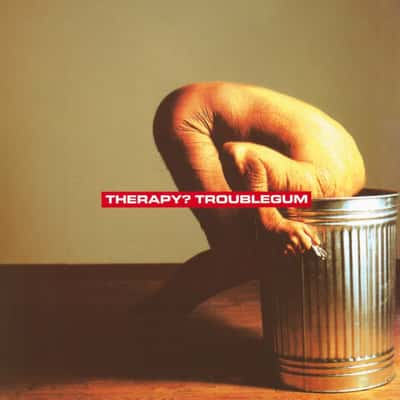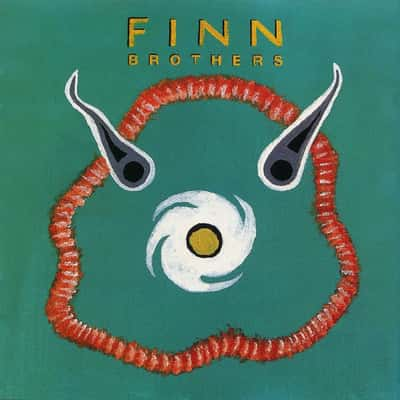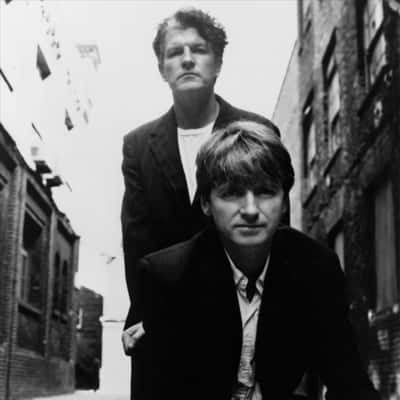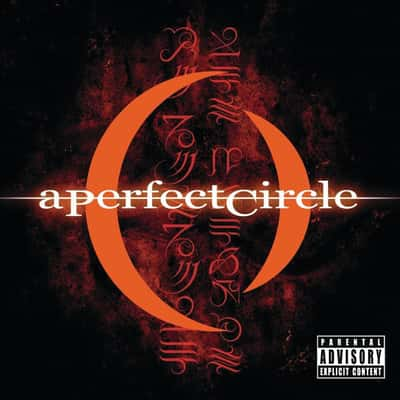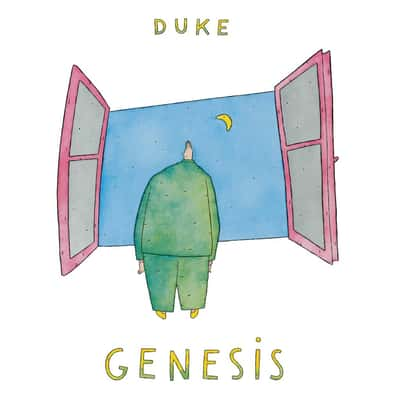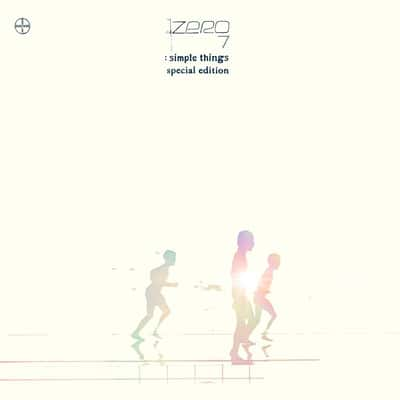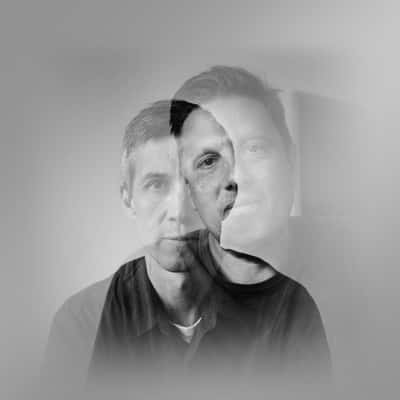
Exploring the Echoes of Melancholy: From Therapy? to Tears for Fears
Troublegum 🎸
The Tarnished Mirror of the 90s 🥀
Released on February 7, 1994, Troublegum emerged at a tumultuous time when alternative rock was both a cathartic outlet and a commercial force. Therapy?s fourth studio album is often celebrated for its razor-sharp lyrics and heavy melodies that encapsulate the angst of a generation disillusioned by life’s absurdities. You could say it holds up a tarnished mirror to the 90s, reflecting a mix of anger, humor, and social commentary infused within its gritty sound. The very title suggests a struggle or burdensome weight, yet the music dances around those dark themes with audacious cheerfulness.
Wading Through The Grunge Swamp 🌊
During the era of Troublegum, grunge was king. Yet, rather than conforming to the genres often dreary motifs, Therapy? forged a path that was uniquely their own. The albums blend of alternative rock with punk-inflected energy can be traced to influences from the Northern Irish punk scene, yet what makes it distinctive is the incorporation of pop sensibilities that create infectious hooks, a notion not abundantly explored by their contemporaries. Tracks like Screamager and Nowhere demonstrate this striking juxtaposition of buoyant melodies running parallel to darker thematic undercurrents.
The Anatomy of Anguish 🎭
Lyrically, Troublegum is a hurricane of self-reflection that delves into self-loathing and existential angst—captured brilliantly in lines that oscillate between biting wit and heartfelt vulnerability. A standout track, Die Laughing, showcases this duality beautifully, merging a comically bleak perspective with a catchy refrain, luring listeners into an uncomfortable yet ear-grabbing experience. Daughter of its cultural fabric, this album is also tinted by the fallout of The Troubles in Northern Ireland, enriching its lyrical depth. Therapy? embraces the absurdities of life with a keen sense of irony that resonates across generations.
The Studio Chronicles: A Radical Transformation 🎙️
Another captivating aspect of Troublegum lies in its production. Recorded at the legendary Rockfield Studios in Wales, the album captures an intimate yet confrontational sound. The band made a decision to take risks in their recording approach, blending traditional rock elements with more experimental sounds, a precursor to the nu-metal wave that would surface a few years later. Importantly, the production techniques utilized by producer Chris Sheldon laid down a sonic template that helped define the band’s legacy and influenced a variety of artists in the alternative and post-grunge scenes.
Turning Heads: Fan Reception and Lasting Legacy 👥
Upon release, Troublegum swiftly garnered acclaim, resonating deeply with fans and critics alike. Its combination of energetic riffs and provocative lyrics positioned it as a cornerstone of 90s rock. The album peaked at number five on the UK Albums Chart and spawned hits that continued to spin on radio waves, even venturing into the Top 40. The success of the album not only solidified Therapy?s place in rock history but also paved the way for similar bands exploring the intersection of melody, introspection, and existential questioning.
Decades later, the influences of Troublegum are evident in a myriad of artists and genres. The albums audacity to tackle weighty subjects with a humorous touch made it a sibling to the more emotive, introspective sounds of bands like My Chemical Romance and Brand New, highlighting a lineage of artists unafraid to share their vulnerabilities.
Fans as Pilgrims: The Troublegum Tour 🚍
The tour supporting Troublegum became a rite of passage for many fans, marked by wild energy and a sense of communal catharsis. Stories abound of fans connecting to the band’s raw honesty, echoing lyrics back in unison during performances. There’s something significant about experiencing music live that transcends recorded versions; it creates a shared space of understanding amidst chaos. This connection solidified not just a fanbase, but a shared narrative of healing through the bands music.
The Yin and Yang of Therapy? ☯️
Ultimately, Troublegum is more than just an album; its a resonant correspondence with struggles that continue to unfold. Therapy? stands at the crossroads of humor and heartache, offering a soundtrack for anyone grappling with their own demons, wrapped in infectious melodies. As we navigate through today’s complex landscape, the lessons and levity embedded in Troublegum remain touchstones for not just understanding the past but also for confronting the present. In a world craving authenticity, the poignant yet playful essence of Troublegum still sings out loud and clear.
Finn 🎶
The Genesis of a Timeless Duo 🌌
Released in 1995, Finn serves as a captivating debut for the Finn Brothers, Tim and Neil, who are no strangers to the spotlight. Prior to this project, they had already made waves as part of Crowded House and Split Enz, yet Finn marked a return to something deeply personal and introspective. In the wake of the 1990s grunge explosion, a record borne from the brothers unique blend of melodic pop and thoughtful lyricism seemed like a brave response, carving a space in the hearts of listeners yearning for authenticity.
Sounds in the Studio: An Artistic Playground 🎹
Produced by the innovative Tchad Blake, known for his pioneering use of unconventional miking techniques, Finn breathes a freshness that resonates throughout. The brothers insisted on a DIY ethos, playing most instruments themselves and only inviting the gifted Dave Dobbyn to lend his bass skills to “Kiss the Road of Rarotonga.” This hands-on approach not only fostered a sense of camaraderie and spontaneity but also infused the album with layers of texture that feel both familiar and entirely new, evoking the bedroom demos of their youth while also anchoring themselves in the rich traditions of their New Zealand roots.
Unraveling the Tracks: A Sonic Quilt 🧵
Each song on Finn unfolds like a story, interweaving personal narrative with universal themes. The opening track, “Sinner,” sets the stage, marrying Neils haunting vocals with Tims intricate guitar work, creating a soundscape that beckons listeners into their world. Tracks like “Give It a Whirl” and “Kiss the Road” dance on the edge of whimsy and melancholy, showcasing a blend of hopeful melodies counterbalanced by poignant reflections.
Interestingly, many songs were written during a tumultuous period post-Crowded House, revealing a deeper emotional resonance. For those familiar with Neil’s bracing lyrics and Tim’s tender melodies, tracks like All I Want provide a glimpse into the brothers personal struggles—their longing, aspirations, and the paths that led them to create together.
From Demos to a Dream: Behind the Scenes 🎤
What’s truly fascinating is how the albums’ embryonic stages saw some of these tracks initially slated for a Crowded House project but ultimately became part of the Finn Brothers identity. As they navigated this artistic transition, they found themselves in a creative maelstrom of ideas—evolving from celebratory songs meant for larger extremes to deeply introspective pieces resonating with intimate spaces. This pivot not only strengthened their bond as brothers but also ignited a creative spark that would influence their future endeavors.
Cultural Resonance and Legacy 🌍
In the years that followed, Finn became a hidden gem cited as an influence by luminaries across multiple genres—from the heart-wrenching ballads of indie rock to contemporary artists within the realm of pop. Its understated genius echoes through time, resonating with a generation that sought solace in lyrical authenticity amidst an era rife with manufactured sounds.
As the world shifted towards a more electronically driven soundscape, the Finn Brothers stayed grounded, often returning to the organic, heartfelt quality displayed in this inaugural masterpiece. Fans continue to celebrate this album decades later, showcasing the transcendent power of heartfelt music amid fleeting trends.
A Personal Connection: The Finn Experience ✨
For the Finn Brothers, Finn was more than just an album; it was a reclamation of their artistic identity. Tim and Neil’s rapport is palpable, laced with sibling rivalry, laughter, and love—elements that resonate deeply with listeners. The personal nature of their music invites fans into the inner workings of their minds and hearts, making every listen a deeply shared experience.
As we reflect on the album today, its themes of displacement, longing, and familial binding remain ever-relevant. The Finn Brothers debut is not just a mere collection of songs; it serves as a testament to the enduring power of familial love and artistic expression, ensuring that their musical journey is one forever cherished and celebrated. So here’s to Finn—a timeless reminder of the beauty that arises when genuine emotion meets the craft of songwriting. 🎤❤️
Apple 🍏
The Birth of an Icon 🌟
Released on August 14, 1990, Apple is more than just the sole studio album by Mother Love Bone; it stands as a poignant artifact at the intersection of glam rocks glitzy decline and the impending weight of grunge. Formed in Seattle, this band was a powerful eruption of creativity, capturing the kaleidoscopic flair of the late-‘80s rock scene while subtly foreshadowing the stark authenticity that would soon dominate the ‘90s musical landscape.
Fronted by the captivating Andrew Wood, whose theatrical presence crafted an intoxicating mix of vulnerability and bravado, Mother Love Bone presented a unique convergence of influences. The bands aesthetic—think dynamic melodies woven with haunting lyrics—ensured that they bridged gaps between genres. Apple showed an earnestness that set it apart from the self-indulgent excess that often typified its contemporaries.
A Tragic Legacy 💔
Apple is often overshadowed by the deep tragedy that permeated its release. Just months before its debut, Andrew Wood succumbed to a heroin overdose, leaving a legacy that felt all the more profound in light of the album’s themes of love, longing, and loss. The band was already poised on the verge of stardom, creating a haunting irony—as if Wood, with his soaring pipes and vibrant theatricality, could only live to inject a mere sliver of his brilliance into the world before the curtain drew down.
Songs like Chloe Dancer/Crown of Thorns, a shimmering maelstrom of yearning and desolation, capture this essence beautifully. The haunting start of Chloe Dancer builds into the heavy weight of Crown of Thorns, almost as if Wood was whispering his final thoughts into the fabric of the music. This track, emblematic of his extraordinary talent, transformed into a lamentation for lost potential. Today, it remains a showstopper, often covered by artists who recognize its raw emotional depth.
Musical Innovations 🚀
Musically, Apple is an experimentation in sound that overshadows much of its era’s output. Produced by Bruce Pavitt—a key figure in the burgeoning Seattle music scene—there was a conscious effort to employ a more open and live production style. This technique granted the album an organic sound, one that feels both raw and polished. In an age of heavy processing and synthetic sounds, Mother Love Bone opted for authenticity, and it paid off splendidly.
Tracks like Stardog Champion encapsulate this ethos. The energetic, anthemic sounds create a vivid tapestry underpinned by Mike McCreadys (later of Pearl Jam fame) soaring guitar solos. Here, the seeds of grunge are vividly sown, with future icons taking note of Mother Love Bones pioneering spirit. The album’s ability to embrace both grit and glam showcases a technical prowess that few artists achieve so effortlessly.
An Unsung Connection 🎶
Often credited as forebearers to the Seattle grunge explosion, Mother Love Bone’s sound and style laid the groundwork for bands like Pearl Jam and even Soundgarden. The tragic narrative of Andrew Woods life and untimely death imbued the Seattle scene with an authenticity that continues to resonate. Interestingly, Chris Cornell wrote Wood, a heartfelt tribute to his friend, adding another layer to the Mother Love Bone mythology.
Moreover, Apple emerged during a pivotal moment in music that saw the consolidation of youth culture into commercially successful genres. In many ways, the album embodies the tension between the glam of the Sunset Strip and the burgeoning authenticity of the grunge movement, a narrative that would evolve dramatically throughout the 1990s.
Lasting Impact and Reflection 🌄
Apple stands as a reminder of the delicate balance between success and tragedy within the music world. Even more than three decades after its release, the album lives on—not just as a touchstone for grunge, but as a complex exploration of identity, loss, and passion. For many fans, it’s a collection of memories intertwined with the grief of what could have been, a nostalgia not only for the catchy hooks and grand theatricality, but for the vibrant life of Andrew Wood himself.
Ultimately, Apple is not merely an album; it is a legacy that resonates through time. It reminds us that while the music changes, the emotional truths remain timeless, connecting generations of listeners to the spirit of rock and rolls most visceral moments. And in that connection, the echoes of Mother Love Bone continue to thrive, breathing life into a scene that was forever altered by Andrew Woods poignant voice. ✨
Flood 🌊
A Cascade of Sound 🎶
When Headswim unleashed their debut album Flood in 1994, they didnt just create a collection of songs; they crafted an immersive experience that resonated deeply with the spirit of the early 90s rock scene. Emerging from the fusion of grunge’s raw energy and psychedelias intricate soundscapes, Flood stands out as a compelling artifact of an era where music was in a constant state of evolution.
Originally titled Precipity Flood, the album was recorded in just three weeks at the renowned Rockfield Studios in Wales, where legendary artists like Queen and Oasis had previously laid down tracks. Produced by Dave Eringa, known for his work with the likes of Manic Street Preachers, the album captured a unique sound that danced on the edges of heavy guitar riffs and delicate melodic introspection 🌀. The high-energy recording process allowed the bands chemistry to shine through, giving listeners a raw, unrefined taste of their sonic palette.
An Overlooked Masterpiece 🔍
Despite the album’s brilliance, Flood often gets overshadowed in discussions of 90s rock. While contemporaries like Nirvana and the Smashing Pumpkins dominated the mainstream, Headswim quietly carved out their own niche. Lyrically, Flood exhumes themes of existential dread and introspection, often exploring the tension between chaos and clarity—an experience all too relatable in the tumult of the era. Songs like Creep and Sonic Youth showcase a band comfortable dabbling in contrasting emotions, weaving in swirling guitar work with poignant lyrics that still resonate today.
One of the album’s lesser-known innovations was its use of dense sampling and textural layering, which would have a ripple effect on future alternative bands. Headswims approach incorporated not just classic rock influences but also an eclectic variety of sounds, hinting at the electronic experiments that would soon take hold of the broader rock scene. Their willingness to push boundaries before the advent of the digital revolution is a testament to their forward-thinking artistry.
The Ripple Effect 🌊
“Flood” was more than just a debut; it was a pioneering force, influencing a generation of artists who would follow in the footsteps of the wave Headswim created. The albums experimental edge can be seen echoed in the works of bands like Radiohead and Muse, both of whom would continue to blend atmospheric rock with intricate musicianship. While mainstream success eluded Headswim, their sound undoubtedly paved the way for artists seeking to explore the vast, uncharted waters of rock and beyond.
A Personal Connection 🖤
For band members like Clovis Taylor, the creation of Flood was not just about crafting music; it was also about personal transformation. The emotional weight of living through the chaotic landscape of the 90s found its way into their sound, forged like steel under pressure. Taylor often recalls how the albums songwriting became a cathartic journey, intertwining their personal experiences with the tumultuous backdrop of a changing world. This connection to their music is palpable, creating an intimate bond between the band and listeners who found solace in their explorative sound.
The Legacy of Flood 🌟
With its recent re-release, Flood has found a new audience, recontextualizing itself in todays musical landscape where nostalgia meets innovation. Fans from the original generation are rediscovering the album, while younger listeners are encountering its unique fusion for the first time. The resurgence of interest has led to discussions about the relevance of Headswim and their place in the annals of alternative rock history.
In the end, Flood is not merely a relic to be shelved; it is a vibrant, pulsing entity, a testament to a band that dared to traverse the boundaries of sound and feeling. Headswims debut is a timeless reminder of the power of music to capture the complexities of human experience—a wave that continues to wash over generations, inviting all who dare to listen into its depths. 🌊🎸
Neon Heat Disease - Live in Los Angeles 🎸
A Sonic Journey Through the Night 🌌
Released on September 26, 2025, Neon Heat Disease - Live in Los Angeles is more than just a live album; it’s an electrifying document of a moment in time captured by the supergroup BEAT, a collective of formidable musicians hailing from the iconic King Crimson lineage. The album captures the kaleidoscopic energy of their performance, taking listeners on a journey through progressive rock and new wave that resonates with both the soul and the intellect.
The Inner Workings of Neon Heat Disease ⚙️
One of the albums standout features is its ambitious opening track, Industry, stretching nearly ten minutes. This piece is a sonic masterclass in tension-building, blending intricate guitar lines with polyrhythmic drumming that creates a palpable sense of unease and excitement. It serves as a perfect introduction to the bands expansive sound, where each musician showcases their remarkable prowess while contributing to a cohesive whole.
Recorded in the heart of Los Angeles, the album not only immortalizes BEATs live performance but also pays homage to the city that has been a crucible for cultural evolution. From the vibrant streets of Hollywood to the artistic enclaves of Echo Park, each note reverberates with the spirit of a metropolis that has long been a hotspot for musical innovation. The atmospheric recordings capture the unique essence of LA, where artists from all genres blend their sounds in a ceaseless symphony.
Political Undertones and Provocative Themes 🔥
But Neon Heat Disease isn’t merely about musical prowess; it also delves into poignant themes. The title itself invokes a sense of societal urgency and critique, reminiscent of the lyrics of 1980s new wave bands that tackled issues of consumerism and emotional detachment. The group channels this energy in tracks that explore the ramifications of modernity and the existential crises it can provoke. It’s a timely reminder of the challenges faced in our frenetic 21st-century existence, making it not only an album for music lovers but also one for social commentators.
A Legacy Articulated Through Performance 🎤
One particularly interesting element of the album is its limited edition release, which features an additional 12-track collection. This extra content chronicles BEATs diverse repertoire and illustrates their commitment to live improvisation. Unlike typical studio recordings, these live tracks sparkle with the spontaneity and raw energy of performance, allowing listeners to experience the unfiltered connection between the musicians and their audience.
Fans have appreciated the album not only as a testament to BEATs growing legacy but also as a bridge to the past, highlighting their rootedness in musical traditions while forging ahead into uncharted territories. Many have drawn comparisons to the revered King Crimson works, yet BEAT offers a fresher angle, embracing electronic elements and modern influences that push the boundaries of what progressive rock can be.
Echoes Through Time and Space 🌍
As we listen, one cannot help but marvel at how Neon Heat Disease reflects the ongoing evolution of rock music. There’s a particular resonant quality to their sounds—like a beacon guiding today’s artists. Newer bands find inspiration in their blend of genres, while established acts nod to their technical innovations in rhythm and arrangement.
The recording sessions themselves were fraught with the challenges endemic to live music—technical glitches, unpredictable audience reactions—but this chaos only added to the authenticity of the final product. Each twist, turn, and unexpected flourish during the performance stands as a testament to their musicianship and unyielding creativity, promising fans that yes, rock is alive and kicking.
The Takeaway: The Pulse of a New Era 💓
Ultimately, Neon Heat Disease - Live in Los Angeles stands as a critical chapter in BEATs narrative, a thrilling testament to what can happen when talent, passion, and a vibrant city collide. It invites listeners into a multidimensional experience, offering not just an auditory spectacle but a call to reflect on the world around us.
As the album continues to garner attention, it cements BEATs place in the pantheon of modern music—a group that doesn’t just live in the past but molds it into something dynamic and progressive. Whether you’re a longtime fan of progressive rock or new to the genre, this album is an exhilarating ride, a vibrant pulse through the heart of a neon-drenched Los Angeles night. 🌆
Songs for a Nervous Planet 🎶
Tears for Fears have once again returned to weave a tapestry of emotion with their latest release, Songs for a Nervous Planet. Released on October 25, 2024, this album captures the essence of a band that has witnessed the world’s tumultuous shifts—from the political landscape to the anxieties of the digital age. A combination of 18 live recordings paired with four new studio tracks, this album embodies not just nostalgia but an ever-evolving reflection of societys psyche.
A Live Wire of Emotion 🌍
The albums live recordings pulsate with an electric energy that transcends the stage. Tears for Fears have always been known for their powerful live performances, but this collection serves as an auditory time capsule reflecting the bands ongoing dialogue with their audience. From anthemic grooves to introspective ballads, the audiences reactions can be heard, creating a palpable energy that studio recordings often lack. Each live track reverberates with the voices of thousands witnessing the band together, creating a unique sense of community—a vital trait, especially in our current era of isolation.
The Sound of Change 🔄
Musically, Songs for a Nervous Planet captures the essence of progression while remaining true to the band’s roots. The new studio tracks delve into experimental hues that remind listeners of their 80s synth-pop beginnings while integrating contemporary soundscapes influenced by todays digital trends. This melange illustrates how Tears for Fears are not merely resting on their laurels but, rather, engaging with the evolving sonic environment. It reflects a band that has embraced change and resilience, much like the planet itself—a place constantly under pressure yet capable of remarkable beauty.
Cultural Reflections: An Ongoing Conversation 🗣️
In a world increasingly marked by anxiety—be it political, environmental, or societal—this album resonates with a timely relevance. Songs that grapple with uncertainty and restlessness invite a deep connection, mirroring our collective state. The title itself, Songs for a Nervous Planet, reflects issues that arent just personal but are emblematic of societal fears. It encourages listeners to confront these feelings together, cementing the notion that music can be a powerful form of solace and dialogue.
The Legacy of Tears for Fears 🔍
Tears for Fears are often credited as pioneers of the new wave sound—a genre that not only influenced a multitude of artists across various genres but also laid the groundwork for future movements such as synthwave. This album reaffirms their enduring legacy; their sonic fingerprints can be traced in the work of contemporary artists like The 1975 and CHVRCHES. The band’s blend of pop sensibility with darker thematic undertones has paved the way for a new generation of musicians who tackle personal and societal issues through their art.
Behind the Curtain: Personal Stories 🎤
While the album is rich with sound, it also offers a glimpse into the personal journeys of Roland Orzabal and Curt Smith. These stories are woven into the fabric of the lyrics and the energy of the performances. Fans are treated to a closer look at the existential contemplations that have shaped the band over the decades. The process of curating these live performances and the decision to introduce new tracks was not just artistic but deeply personal—an act of catharsis for both band and audience.
Fan Reception: A Nostalgic Reunion 🙌
The initial fan reception has been overwhelmingly positive, with many praising the emotional depth of the new tracks. For long-time followers, the album serves as a nostalgic reunion, invoking memories of youth while addressing the pressing issues of today. New listeners, however, are finding their journey just beginning, discovering the rich history embedded within the bands catalog. This duality of relevance speaks to the broad appeal of Tears for Fears, affirming their place in both the past and the present.
In Conclusion: An Album for Our Times 🌈
Songs for a Nervous Planet is a testament to the power of music as a vessel for communal anxiety and joy. Both a celebration and a challenge, it urges us to confront the spectrum of human emotion in the face of an uncertain world. As we navigate our own nervous planet, Tears for Fears provides a soundtrack—rich, reflective, and resonant—that invites us all to join in the chorus of humanity’s complexities.
(Whats the Story) Morning Glory? 🎸
A Sonic Time Capsule of the 90s 🌟
Released on October 2, 1995, Oasiss second studio album, (Whats the Story) Morning Glory?, stands as a defining cultural touchstone of the Britpop era. Meshing the jangly guitars of The Beatles with a raw rock n roll sensibility, the album carved out a niche that would resonate for decades. It is not just an album; its a vivid snapshot of a time when music offered both hope and rebellion to a generation navigating the complexities of life in post-Thatcher Britain.
A Rock n Roll Renaissance 🎶
At first listen, (Whats the Story) Morning Glory? feels like a revival of the classic rock sound, yet its wrapped in the unmistakable swagger of 90s Britpop. From the booming anthems of “Wonderwall” to the infectious chorus of “Don’t Look Back in Anger,” Noel Gallaghers songwriting shines with its clever wordplay and emotive lyricism. The album sparked a resurgence in guitar-driven music, influencing a wave of artists across genres. 🎤 Artists like Coldplay and The Verve drew inspiration from the atmospheric soundscapes and poignant narratives that Oasis masterfully crafted, embedding a certain storytelling ethos into their own work.
The Making of an Iconic Sound 🛠️
What many don’t know is that the albums production marked a significant evolution in the bands sound. Produced by Owen Morris, the recording process was often chaotic, with sessions running long and the band members at odds. However, it was in these tense moments of creativity that some of the most compelling music emerged. Morris, known for his dynamic production style, used techniques like layering guitars and experimenting with vocal echoes, which became anthemic in their own right. The iconic intro of “Champagne Supernova” features a slinky guitar riff that swells into a tidal wave of sound—echoing the emotional struggles that weave through Gallaghers lyrics.
Revelation on Chart Domination 📈
Upon its release, (Whats the Story) Morning Glory? skyrocketed to #1 on the UK Albums Chart and held that position for an impressive ten weeks. But its significance isnt merely in commercial success; it’s a monument to the power of music in rallying a generation. The album’s release coincided with a cultural shift; young Britons were drawn to its mood of optimism amidst economic uncertainty, making it an anthem of the 90s youth culture.
An Unruly Live Experience 🎤
The energy of the album was equally palpable in its live performances. A lesser-known fact is that during their infamous gigs, Oasis often played songs in unexpected versions—taking their studio tracks and breathing new life into them with jam sessions that extended solos and changed arrangements. This ability to evolve their sound live elevated the experience, turning their concerts into almost spiritual happenings where fans felt deeply connected to the music and to one another.
Oasiss Enduring Legacy ✨
The enduring legacy of (Whats the Story) Morning Glory? can be tracked through contemporary artists still chasing the same mix of arrogance and humility that Oasis perfected. Adorned with the mantle of being one of the best-selling albums in British history, it not only shaped the lives of its listeners but also established new paradigms in rock music. Years later, the very essence of the album continues to echo in today’s indie and rock arenas.
A Love Letter to the Fans 💌
The songs resonate deeply with fans, many of whom have personal stories associated with tracks like “Wonderwall.” Its almost a rite of passage for young lovers in the UK to strum the chords on a guitar and belt out the chorus, turning the song into an unofficial anthem of young love. Each note and lyric evokes a nostalgic yearning for simpler days while simultaneously feeling relevant to modern experiences of love and longing.
As we celebrate its legacy nearly three decades post-release, =(Whats the Story) Morning Glory? stands not only as a landmark album for Oasis, but a lasting message: music has the profound ability to connect, to evoke emotion, and ultimately, to speak to something fundamental in all of us. So here’s to that pivotal moment in time when the world needed a dose of rock courage, and Oasis delivered unapologetically. 🎉
Mer de Noms 🌊🎵
The Birth of a Timeless Sound 🌀
In May 2000, music fans across the globe were enveloped by the haunting waves of Mer de Noms, A Perfect Circles groundbreaking debut album. This auditory journey was both a product of meticulous craftsmanship and a fervent emotional release, led by the duo of Maynard James Keenan, the enigmatic frontman known for his work with Tool, and Billy Howerdel, a visionary musician whose roots lay in the intricate world of sound engineering. Their collaboration was not merely a union of two creative minds; it was a composer and a sculptor, converging to carve out a monument in the landscape of alternative rock.
Lyrical Alchemy: A Personal Deep Dive ✍️
What sets Mer de Noms apart is its profound lyricism that grapples with themes of love, loss, and existential musings. The track “Judith,” for example, is a visceral tribute to Keenans mother, who faced a debilitating illness with stoic resilience. Emblazoned with raw intensity, the song captures an array of emotions—from anger and sorrow to a bitter longing. Keenans ability to transform personal pain into universal experiences became a hallmark of his songwriting, influencing future generations of lyricists and fueling the emotional depth of the album.
Recording in Solitude: The Relic of Grandmas Basement 🏡
Interestingly, much of the album was recorded in an unorthodox location: Howerdel’s grandmother’s basement. This space, ripe with its own nostalgic echoes, contributed significantly to the recordings intimate sound. As Howerdel would later describe, the basement offered a comforting isolation, allowing for focused creativity. The choice of this location also implicitly spoke to the bands ethos—melding the personal with the profound, grounded in the humblest of environments. The atmospheric quality reminiscent of 90s grunge and dark metaphysical themes became cemented in classics like “The Hollow” and “Orestes.”
Beyond the Music: Cultural Resonance 🎨
When Mer de Noms surfaced, it arrived at a pivotal moment in music history. The late 90s heralded the rise of nu-metal and alternative rock, genres characterized by emotional introspection and heavy soundscapes. Yet A Perfect Circle threaded a needle of artistic sophistication that distinguished them from the muddy waters of commercialization. In fact, the albums release came just before the genres explosion, influencing artists like Linkin Park and even feeding into the creativity of emerging bands such as System of a Down.
The Ripple Effect: A Legacy of Influence 🌊
Though it may seem unassuming at first glance, Mer de Noms has gradually been categorized among the pantheon of influential rock albums. Nearly twenty-five years later, it continues to inspire a wave of modern musicians who cite it as a blueprint for merging heavy sound with lyrical depth. Bands across the spectrum—from indie rock to metal—have unearthed influence from its expressive choruses and structural experimentation.
A Community Beyond the Band: The Fan Experience 💕
The albums reception was a shared experience among listeners who found solace in its dark themes. Fans have repeatedly expressed how songs from Mer de Noms resonated deeply with their personal narratives, forming a community forged in shared experiences of pain, redemption, and hope. Over the years, this emotional connection has led to spontaneous gatherings and tribute concerts, ensuring that the spirit of the album lives on.
Looking Back, Moving Forward: A Perfect Circles Evolution 🔄
As A Perfect Circle has evolved, so too has their sound. Their subsequent albums further explored thematic depth while expanding sonic textures, yet “Mer de Noms” remains a timeless introduction to their artistry—an anchor point amid a sea of musical evolution. The album serves not only as a pivotal starting point for the band but as an everlasting reminder of the beauty found in vulnerability and the complexities of human emotion.
In retrospect, Mer de Noms is not just an album—its a haunting reflection of lifes intricacies, a definitive chapter in the book of rock history, and a unique testament to the magic that can manifest when two gifted artists come together in creative harmony. 🌌
Duke by Genesis 🎹
A Triumphant Transformation 🌟
When Duke was released in March 1980, it marked a pivotal moment not just for Genesis, but for the wider landscape of rock music. This album was the second outing of the band as a trio, featuring Tony Banks (keyboards), Phil Collins (vocals, drums), and Mike Rutherford (bass, guitar). Following the departure of guitarist Steve Hackett, many were anxious about how the iconic progressive sound would evolve. Yet, from the first note of this ambitious project, it became clear that change would propel Genesis into a thrilling new era.
The metamorphosis was significant; with fewer musicians, the remaining trio had the freedom to streamline their sound while simultaneously leaning into the infectious melodies of pop. It was a fusion of the complexity they were known for with a newfound accessibility that resonated with a wider audience, leading to Duke reaching the pinnacle of the UK charts and becoming a Platinum success in both the UK and the US. 🌍
A Journey Through the Tracks 🛤️
One of the standout tracks, Dukes Travels, exemplifies the essence of the band’s progression. Clocking in over eight minutes, this epic showcases the band’s mastery of progressive rock while embracing pop sensibilities, resulting in a musical journey that captivates listeners. It begins with serene instrumentation, slowly building into a storm of melodies that reflect both triumph and turmoil. Fans often cite this as one of the most quintessential Genesis songs, underscoring the album’s ability to unite generations of listeners—an impressive feat at a time when the musical landscape was shifting rapidly.
Interestingly, the track Man of Our Times evokes a sense of being slightly out of place on the album, sparking debates among fans and critics alike. Its more progressive leanings contrast with the overall accessibility of Duke, leading some to believe it might have shone brighter on a later, more eclectic album. Yet, this very contrast is part of what makes Duke such a fascinating listen, as it reflects the bands ongoing evolution and the challenges they faced in redefining their identity.
Cultural Reflections and Relevance Today 🧭
Duke emerged during tumultuous times in the late 70s and early 80s. The world was grappling with significant political and social changes, and music often served as a response to these shifts. Genesis, with Duke, grasped the pulse of the era—melding progressive rock with the burgeoning pop movement. This clever fusion paved the way for later artists, influencing a myriad of genres and acts, from the anthemic sounds of bands like Marillion to the sprawling art-pop explorations of Radiohead.
The albums themes, many revolving around the human experience, identity, and introspection, still resonate with listeners today. Tracks like Turn It On Again, with its catchy hook and introspective lyrics, have become anthems of self-discovery, subtly reminding us of the universal desire for connection and understanding. 💬
A Legacy of Loyalty and Connection 🕊️
Fans have embraced Duke not just as an album, but as a companion through different phases of their lives. Its combination of rhythmic sophistication and poignant lyrics creates emotional depth, evidenced in personal stories shared at concerts where listeners recount how the albums music accompanied them during milestones, heartbreaks, and victories.
Moreover, the artwork of Duke, designed by the renowned artist and long-time collaborator of the band, Paul Whitehead, captures this journey beautifully. The whimsical cover, depicting Duke—an anthropomorphic rival to the charming Engelbert Humperdinck—adds a layer of storytelling about the albums exploration of cultural identity and the contrast of personas we wear in our lives. The visual representation ties together the multifaceted experience of the music, making the album a holistic piece of art. 🎨
The Genesis of Tomorrow 🔮
In retrospective discussions, critics often point out that Duke simultaneously represents a culmination of Genesis’s history and a beginning of new soundscapes. It acted as a bridge between their progressive roots and a broader acceptance in the pop realm, showing that evolution is a vital element of artistic expression. Today, as listeners revisit Duke, they delve into a rich tapestry of sound that invites exploration, raising questions about personal identity, change, and the interplay of complexity and simplicity in relationships—not just in music, but in life itself.
In the grand narrative of music history, Duke by Genesis stands as a vibrant testament to transformation, revealing that with every ending comes the promise of a new beginning. Whether you’re a longtime fan or newfound explorer, there’s always something fresh to uncover within this iconic album. 🎶
A Momentary Lapse of Reason 🌌
A Shifting Landscape: Pink Floyds New Chapter 💫
In the swirling echoes of the 1980s, a decade characterized by musical evolution and technological advancement, Pink Floyd emerged from the fog of internal strife and creative conflict with their 13th studio album, A Momentary Lapse of Reason. Released on September 8, 1987, this album marked both a continuation and a departure, a delicate balancing act following the tempestuous split with Roger Waters, whose departure in 1985 left the band to navigate the uncharted waters of their identity. 🎶
Though it has often been shadowed by the masterpieces of the past, A Momentary Lapse of Reason stands on its own—a moody yet melodic reflection on fragmentation and recovery. With David Gilmour at the helm, the album represents a shift towards a more personal expression, one that resonates with the themes of isolation and renewed hope. ♪
The Sonic Canvas: Evolution of the Sound 🎨
A Momentary Lapse of Reason is foundational in its exploration of digital production techniques, signifying a departure from the analog sounds of previous works. This was a time when studios began to embrace the revolutionary power of digital recording—Gilmour and co. leaned into this with open arms. The albums lushness, particularly on tracks like Learning to Fly, is bolstered by Gilmours inventive use of synthesizers intertwined with his iconic guitar work. The ethereal backing vocals of the session musicians, alongside an accompanying world of synthesizers, painted a textural backdrop that was both nostalgic and contemporary.
One of the lesser-known innovations lies within the albums layering techniques, as Gilmour himself stated in interviews that the process was akin to creating a dreamscape. The flurry of sounds layered with precision helped craft a narrative that marries personal introspection with a grander, universal search for meaning—a hallmark of Pink Floyds artistic approach.
The Internal Dialogues: Lyrics and Themes 📜
In contrast to the grandiose conceptual albums that defined their earlier work, this album offered fragmented snapshots of emotion and experience. The lyricism, while often cryptic, speaks to a personal journey through confusion and reconciliation. The title track, for instance, touches on ideas of loss and transient moments—a slip in time mirrored by the album’s very name.
Songs like On the Turning Away delve deeply into themes of human responsibility and compassion. Gilmours voice, laden with sincerity, cuts through the ambient landscape, urging listeners to pay attention to the world around them. The record is both a personal and collective call to awareness, showcasing a shift from chaotic discord towards a soft but urgent plea for connection and understanding.
The Legacy: Influence and Reception 📈
Despite initial mixed reviews and some skepticism from long-time fans, A Momentary Lapse of Reason has witnessed a renaissance of appreciation in recent years. Critics have come to recognize its significance in the band’s evolution and its impact on the progressive rock genre. Albums by artists like Radiohead and Porcupine Tree echo elements of Floyd’s sonic experimentations that began on this record, emphasizing its role as a catalyst for future musicians.
Moreover, the albums artwork, designed by Storm Thorgerson, became an iconic visual anchor, adorned with dreamlike imagery that complements the soundscape. The cover, depicting a beach with a multitude of beds, has become emblematic of a world look while simultaneously yearning for serenity—a poignant representation of the album’s essence.
Personal Echoes: Stories Behind the Scenes 🎤
Recording sessions held at the renowned Astoria—Gilmours own houseboat studio on the Thames—took place amid tranquil surroundings, inspiring a reflective atmosphere otherwise lost in the chaos of urban life. Many of the tracks arose from jam sessions, with Gilmour often experimenting with sounds that echoed the restless spirit of the time.
Rick Wright, although ousted from the band’s roster during the composition phase, returned in post-production, contributing his trademark keyboard textures, lending a warm nostalgia that permeates tracks like The Dogs of War. His contributions, both subtle and critical, became a bittersweet nod to the band’s original lineup—proof that, despite fractures, the essence of Pink Floyd remained resilient.
As we revisit A Momentary Lapse of Reason today, it becomes clear that this album is not merely a transitional piece; it is a compelling testament to resilience, evolution, and the enduring human spirit. Pink Floyd, once again, carved a space for themselves amid the tumult, reminding us that even in moments of uncertainty, beautiful music can emerge from the noise. 🌍✨
Simple Things 🎶
Zero 7s debut album, Simple Things, released in 2001, serves as a luminous portal into the captivating world of downtempo music, encapsulating an era defined by eclectic soundscapes and intimate experiences. With a delicate mix of soulful jazz and electronic vibes, this album remains a cherished gem, inviting listeners into a space of serenity and reflective nostalgia.
Ethereal Beginnings: A Sonic Masterpiece ☁️
Picture this: its the early 2000s, and the music scene is awash with burgeoning genres and experimental sounds. Amidst this vibrant tapestry, Zero 7 emerged from the UK, creating a sound that felt both fresh and timeless. Their work, particularly on Simple Things, was not just about music but rather about crafting an atmosphere—a soothing balm for the chaos of modern life.
Their signature blend of warm, melodic instrumentation and soft, soulful vocals was a breath of fresh air. The album features guest vocalists like Sia and Sophie Barker, whose ethereal arrangements elevate the music, creating lush layers that linger long after the last note fades. Interestingly, Sias contribution to the track Destiny marked her early foray into the public eye, eventually leading to her extraordinary solo career. Without Simple Things, the world might not have witnessed the full extent of her talent. 🌟
The Recording Journey: A Serendipitous Affair 🎤
The creation of Simple Things was nothing short of serendipity. Recorded in a makeshift studio in a London basement, the albums ambience was pivotal in shaping its sound. This intimate environment fostered a creative synergy between the duo—Henry Binns and Sam Hardaker—allowing them to develop a sonic palette that felt personal and inviting. The rustic charm of the studio helped to cultivate an organic sound, blending analog warmness with digital precision.
Their innovative use of sampling and synthesizers, layered with live instrumentation, laid the groundwork for the future of chillout music, paving the way for artists exploring similar sonic territories. In an era where electronic music was often cold and detached, Zero 7 brought a heartfelt, human quality that resonated deeply with listeners.
Influence and Legacy: A Ripple Through Time 🌊
Simple Things was not only a commercial success but also a cultural touchstone, influencing a myriad of artists and genres. It became a quintessential album for the burgeoning nu-jazz movement, inspiring names like Bonobo and Air to explore new sonic horizons. The lush soundscapes and introspective lyrics echoed through later genres like chillwave and lo-fi, showcasing Zero 7s pivotal role in shaping the future music landscape.
In addition to its musical impact, Simple Things found its way into pop culture through film and television. The soothing tones of Warm Sounds and In the Waiting Line adorned soundtracks, further cementing the album’s reputation as the perfect backdrop for moments of introspection, romance, and serenity in an otherwise chaotic world. 🎬💖
The Personal Touch: A Reflection of Life’s Simple Joys 🍃
At the heart of Simple Things lies a desire to celebrate lifes understated pleasures. The music speaks to a universal yearning for tranquility, encapsulated in tracks that feel as much about the listener’s personal journey as they are about artistic expression. Each song acts as a vignette, telling stories of love, longing, and the fleeting nature of time.
The duo often drew inspiration from their own lives, pulling from personal experiences and emotions to create a genuine connection to their audience. It’s evident in the hauntingly beautiful melodies and thoughtful lyrics, offering a soundtrack to the mundane moments that often hold the most meaning.
A Contemporary Echo: Relevance Today 🎧
As we find ourselves navigating the complexities of modern life—be it through the frenetic pace of digital existence or the ongoing global challenges—Simple Things remains oddly prescient. Its soothing melodies and reflective lyrics continue to resonate, acting as a reminder of the importance of pausing to appreciate the simple joys. The album has aged like fine wine, inviting both new listeners and long-time fans to seek solace in its sound.
Zero 7s Simple Things is more than just an album; its a treasure map leading to emotional depths, a refuge in the spirit of the times, and a celebration of the beauty found in simplicity. Its legacy continues to inspire, making it a timeless triumph that elegantly intertwines artists, genres, and audiences into a harmonious whole. ✨
Top Artists (Week 40)
- Therapy? (29 plays)
- Finn Brothers (24 plays)
- Mother Love Bone (22 plays)
- Headswim (19 plays)
- Beat (18 plays)
- Tears for Fears (16 plays)
- Oasis (13 plays)
- A Perfect Circle (12 plays)
- Genesis (12 plays)
- Pink Floyd (11 plays)
- Zero 7 (11 plays)
Top Albums (Week 40)
- Troublegum by Therapy?
- Finn by Finn Brothers
- Apple by Mother Love Bone
- Flood by Headswim
- Neon Heat Disease - Live in Los Angeles by Beat
- Songs for a nervous Planet by Tears for Fears
- (What’s the Story) Morning Glory? by Oasis
- Mer de noms by A Perfect Circle
- Duke by Genesis
- A Momentary Lapse of Reason by Pink Floyd
- Simple Things by Zero 7
